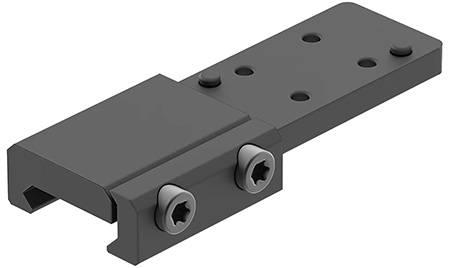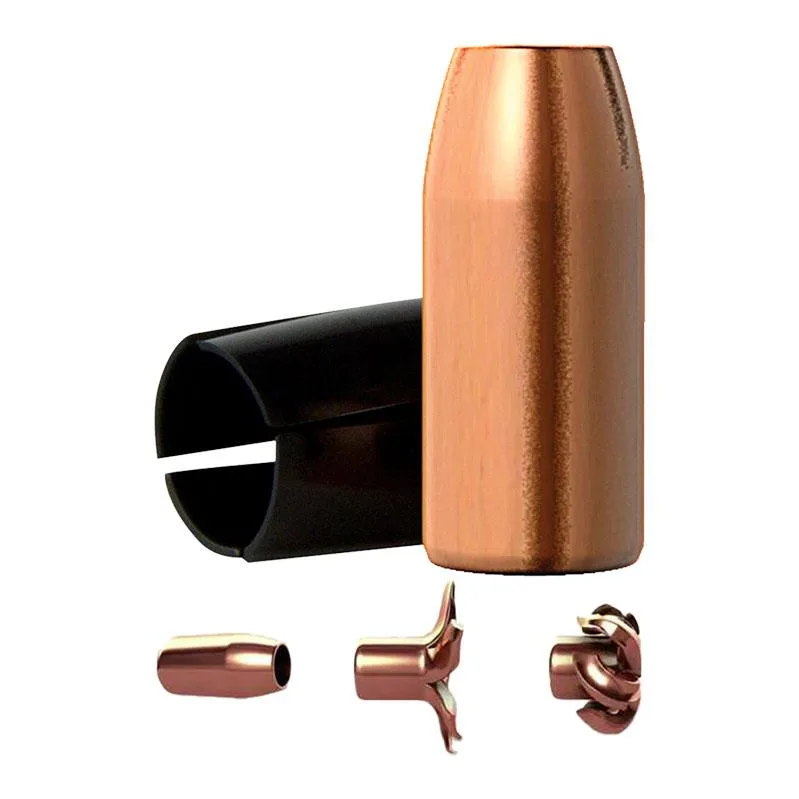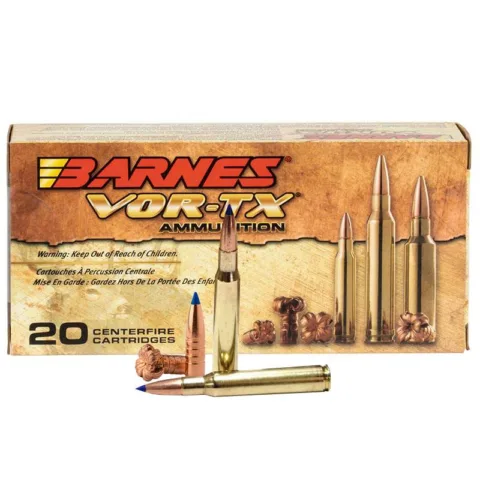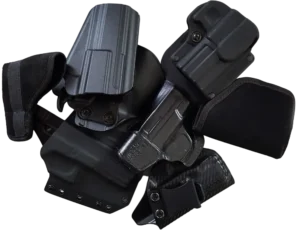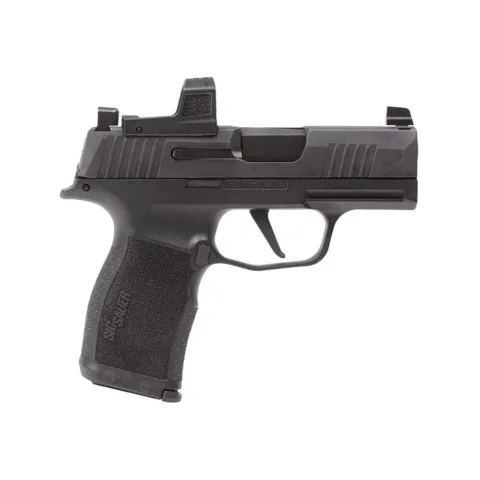Understanding the Fundamental Components and Variations of Bullets
It’s important for anyone in firearms, whether it’s for hunting, sport shooting, or research, to have an understanding of the fundamental components and variations of bullets. A bullet refers specifically to the projectile that gets expelled from the firearm barrel.
However, it’s worth noting that people often use the term incorrectly to describe the cartridge. In reality, a bullet is one part of a cartridge—the ammunition unit.
The Anatomy of a Bullet: Key Takeaways
| Section | Key Takeaways |
| General Overview | – A bullet is the projectile part of a cartridge, often mistakenly referred to as the entire ammunition unit. |
| Anatomy of a Bullet | – Bullets consist of materials like lead, copper, and have components including the casing, primer, and gunpowder. These elements determine trajectory and shot effectiveness. |
| Bullet Types | – Different bullet shapes and sizes are designed for specific purposes, such as flat-point bullets for lever action rifles and round-nose bullets for moderate-range shots. |
| The Cartridge Case | – The cartridge case holds all components of a bullet together, traditionally made from brass, but also from steel or aluminum. Its size and shape influence the firearm’s performance. |
| The Primer | – The primer ignites the gunpowder, positioned at the base of the case. Rimfire ammo has the priming compound within its rim. |
| The Propellant | – The propellant or gunpowder creates pressure inside the cartridge, propelling the bullet forward. |
| The Bullet (Projectile) | – The bullet, distinct from the cartridge, is made of materials like lead and can have specialized tips for performance. Its design affects stability, trajectory, and aerodynamics. |
| Bullet Types & Characteristics | – Full Metal Jacket (FMJ) bullets retain shape upon penetration, Jacketed Hollow Point (JHP) bullets expand upon impact, Ballistic Tip bullets offer accuracy and expansion, and Soft Point bullets balance penetration and expansion. Hard Cast bullets resist deformation and provide penetration. |
| Bullet Design and Performance | – Bullet design influences accuracy, velocity, penetration, and overall performance. Factors include shape, composition, and aerodynamic properties. |
| Caliber Size and Performance | – Caliber size, the diameter of the barrel, directly correlates to bullet diameter. It influences velocity, weight, penetration capabilities, and overall bullet behavior. |
| Environmental Impact | – Common bullet materials like lead, copper, and steel have different environmental impacts. Proper disposal of ammunition is crucial to minimize pollution. |
| Future of Bullet Design | – Innovations in bullet design and materials focus on effectiveness, ethical considerations, and ecological responsibility, with advancements in eco-friendly materials and designs. |
| Dispelling Myths | – Clarification of common myths, such as the accuracy of high ballistic coefficient bullets and the safety of flat-point bullets. |
| Choosing the Right Bullet | – Selection based on application requirements like hunting, target shooting, or self-defense. Consideration of bullet anatomy, performance characteristics like velocity, trajectory, and energy, and practical factors like ammunition availability and cost. |
The anatomy of a bullet consists of components that work together to ensure its functioning. The projectile itself is typically made from materials like lead, copper, or other metals. Then there’s the casing that holds all these parts together. The primer plays a role as it ignites the gunpowder. Lastly, we have gunpowder, which burns rapidly and generates gas to propel the bullet forward. Each component plays a role in determining factors such as trajectory, impact, and overall shot effectiveness.
Bullets are available in shapes and sizes—each designed with purposes in mind. For instance, flat-point bullets provide controlled expansion. They are safe for use in magazines commonly found in lever action rifles.
On the other hand, round-nose bullets are optimized for moderate-range shots and are designed to expand upon impact. Full metal jacket bullets are designed with a shell that doesn’t expand and is typically used for military applications and practice shooting. Having an understanding of these designs and their intended uses will help you make more informed decisions when it comes to selecting the right ammunition for your firearms and shooting goals.
In ammunition, each component plays a role in the firing process. It is essential to have an understanding of these parts as a firearm user.
The Cartridge Case
The cartridge case, also known as the casing or cartridge shell, acts as the container that holds all the components together. Traditionally made from brass. It can also be crafted from materials like steel or aluminum. The size and shape of your cartridge are determined by the case, which also creates a seal at the breech of your firearm.
The Primer
Situated at the base of the case, you’ll find the primer – a crucial component for igniting the propellant. In ammunition, the primer is positioned in the center of the cartridge base. Conversely, rimfire ammo incorporates a priming compound within its rim. When struck by your firearm firing pin, this primer creates a controlled explosion that ignites the gunpowder (propellant).
The Propellant
The propellant, often referred to as powder or gunpowder, is the substance that burns rapidly when ignited by the primer. It produces gases that create pressure inside the cartridge, propelling the bullet forward through the firearm barrel.
The Bullet (Projectile)
Lastly, it’s important to note that the bullet is not the same as the cartridge. The bullet refers specifically to the projectile expelled from the barrel of a gun. Bullets come in shapes and materials, mostly made of lead. Some bullets have specialized tips like Hornadys Heat ShieldTM tip, which helps maintain shape and resist heating for performance. The design of a bullet affects factors such as its stability during flight, trajectory, and aerodynamics.
Bullet Types and Their Characteristics
When exploring the types of bullets available, it’s crucial to understand their characteristics and intended purposes. Whether you’re using them for hunting target practice or self-defense, knowing these differences will help you choose ammunition that best suits your needs.
Full Metal Jacket (FMJ)
The Full Metal Jacket (FMJ) bullet is characterized by a lead core completely encased in a harder metal jacket, like copper or a copper alloy. This design ensures that these bullets retain their shape upon penetration while minimizing expansion. We offer feeding options for both semi-fully automatic firearms. FMJ bullets are popular due to their cost-effectiveness. They are commonly used in operations practice sessions and target shooting.
Jacketed Hollow Point (JHP) bullets have a core covered by a copper or brass jacket, leaving the tip exposed to create a point. This design allows JHP bullets to:
- Expand upon impact, resulting in a wound channel.
- They provide better-stopping power, making them a favored choice for self-defense and law enforcement purposes.
Ballistic Tip Bullets are specifically designed for enhanced accuracy and expansion. They typically consist of:
- A polymer tip that improves aerodynamics, resulting in a trajectory.
- A design that promotes controlled expansion upon impact.
Ballistic tip bullets are often preferred by hunters because they offer a combination of long-range precision and effective terminal performance.
Soft Point Bullets
Soft Point Bullets resemble FMJ bullets. They have an exposed lead tip that allows for expansion, making them suitable for hunting purposes. Key characteristics include;
- A jacket that exposes the lead core at the bullet’s tip.
- A balance between penetration and expansion to efficiently take down game animals.
Hard Cast Bullets
Hard-cast bullets are crafted using a lead alloy blended with antimony and sometimes tin. This unique composition allows them to fulfill two roles;
- Withstand impact on targets by retaining their shape and resisting deformation.
- Provide penetration, making them ideal for game hunting or self-defense against large predators.
Bullet Design and Performance
The design of a bullet plays a role in its performance, which encompasses the study of projectiles in motion. Factors such as the bullet’s shape, composition, and overall design can significantly influence accuracy, velocity, and kinetic energy – all elements shaping its trajectory and impact.
Accuracy
Accuracy is important. An aerodynamic design reduces air resistance, ensuring the bullet maintains a stable path during flight. Features like the spire point tip contribute to achieving a coefficient – an indication of enhanced flight efficiency through the air.
Velocity
When it comes to velocity, aerodynamics again takes the stage. Bullets with properties retain higher speeds over longer distances due to reduced drag. This not only contributes to increased energy upon impact but also extends both range and striking power by efficiently preserving speed throughout its journey.
Penetration
Penetration is influenced by both the velocity and the material composition of the bullet. Take, for instance, the Flex TipTM designs that trigger expansion at speeds. This ensures penetration while still maintaining a level of weight retention.
Bullet Design and Caliber
The design of a bullet is influenced by its caliber; larger calibers typically result in bullets, which in turn carry kinetic energy. However, the design also needs to strike a balance between weight and shape to maintain efficiency.
Bullet Behavior
The behavior of your bullet—how it travels through the air and impacts the target—depends on the relationship between its design and ballistics. Choosing the design for your purpose guarantees optimal performance in terms of flight stability, impact energy, and target penetration.
Caliber Size and Bullet Performance
When exploring firearm caliber, you’re essentially examining the diameter of the barrel. This measurement directly correlates to the diameter of bullets that can be fired from that firearm. Caliber sizes are often expressed in either inches or millimeters; for example, a. 45-caliber pistol fires bullets with a diameter of around 0.45 inches.
Understanding the relationship between caliber and bullet is crucial when considering ammunition performance since it influences velocity, weight, penetration capabilities, and overall behavior upon firing.
Each round of ammunition includes a cartridge that contains the bullet (the projectile) powder, casing, and primer. It’s important not to confuse the term ‘bullet’ with ‘ammunition’ as a bullet is one component of the round or ammo. When choosing ammunition for your firearm, it is crucial, for both safety and performance, that you ensure the caliber matches.
Different Types of Bullets and Their Common Uses
Bullets come in designs, each tailored for purposes such as self-defense, hunting, and target shooting. Some bullets excel in providing precision at the shooting range, while others are optimized for stopping power or ethical kills during hunting.
Self Defense
When it comes to self-defense, there’s a range of bullet options. However, hollow point bullets are widely preferred due to their ability to expand upon impact. This expansion creates a wound channel while minimizing the risk of over-penetration. Hollow-point bullets are commonly used in handguns, which are popular for defense.
- Jacketed Hollow Point (JHP): These bullets expand upon impact to maximize stopping power.
- Flex Tip: Designed specifically for firearms like lever action rifles, these bullets ensure safety in magazines. Expand even at low velocities.
Hunting
In hunting scenarios, bullet performance is crucial to ensure kills. Hunting bullets often feature a point or polymer tip that enables penetration and controlled expansion—essential factors when taking down game animals ethically.
- Soft Point: Ideal for the game as it expands gradually and achieves deeper penetration.
- Polymer Tip: Polymer-tipped bullets are designed with a polymer tip that holds the bullet together at high velocities but allows expansion at lower velocities for deep penetration and humane killing.
For shots, you can enhance aerodynamics to increase accuracy. This is particularly useful for varmint hunting and smaller game because of the expansion it provides.
Target Shooting
When it comes to target shooting and training at the range, you’ll typically use metal jacket (FMJ) bullets. These bullets are designed to penetrate targets without expanding, creating a round hole for scoring. They also help reduce barrel wear, making them ideal for prolonged target practice sessions with rifles or handguns.
- Full Metal Jacket (FMJ) bullets are affordable and reliable, making them great for practice sessions. Lead bullets are another option if you’re looking for a choice, although they’re not as common due to concerns.
Each type of bullet is engineered to deliver the performance required for its purpose. This ensures safety and effectiveness whether you’re defending your home, sharpening your marksmanship skills, or responsibly hunting game.
The advancements in bullet technology have significantly improved their performance over time. Manufacturers now incorporate materials like polymer to reduce weight and enhance ballistics. Copper and steel remain choices due to their durability and reliability. In applications, aluminum is also favored because of its properties.
One notable innovation in bullet design is the hollow point bullet, which expands upon impact. This expansion creates a wound channel while still remaining within the target.
This new technology represents an improvement compared to full metal jacket (FMJ) rounds. It offers increased stopping power while minimizing the risk of penetration.
Advantages of Different Materials
Polymer
These rounds are lightweight. Offer ballistics.
Copper
They provide expansion and effective terminal performance.
Steel
Known for its strength, steel rounds are also cost-effective.
Aluminum
These rounds are extremely lightweight.
Bullet technology incorporates engineered materials to ensure stability during handling while delivering the necessary energy for propulsion. The selection of types and quantities is based on desired performance characteristics.
Bullet design has seen advancements in enhancing accuracy, range, and impact. Innovations like profiling, precise manufacturing tolerances, and electronically guided projectiles demonstrate an ongoing trend toward progress.
Being aware of these material and design advancements in bullet technology allows you to comprehend the cutting-edge capabilities of bullets. This knowledge ensures a perspective on their uses as well as the scientific principles behind their development.
Safety Considerations When Choosing Bullets
Proper Handling
Always handle bullets and ammunition with care. To maintain the integrity of your hands, it’s important to use dry hands, avoiding any oils or moisture.
Maintenance
It is crucial to maintain your firearm to prevent any malfunctions.
Education
Make sure you have an understanding of your firearm and its specific ammunition requirements.
Ammunition Storage
How you store your ammunition plays a role. It’s recommended to keep it in a dry place using containers such as original factory boxes or ammo cans. This helps protect against damage. Ensures unauthorized access is prevented.
Safe Environment
Always store bullets in a location from children.
Temperature Control
Avoid exposing the ammunition to cold conditions to maintain its performance over time.
Firearm Safety
Following handgun and firearm safety protocols when loading and using your weapon is absolutely essential.
Visibility
Before using them, visually inspect each bullet carefully.
Correct Ammunition
Always double-check that the ammunition matches your firearm caliber and loading specifications accurately.
By adhering to these guidelines, you can ensure an experience while handling or using bullets in your gun. Prioritizing safety at all times will help prevent accidents and maintain shooting practices.
Environmental Impact of Bullet Components
When considering the materials used in bullet components, it’s important to be aware that common metals, like lead, copper, and steel, are involved. Each of these metals has varying degrees of impact. It’s metal. When used in bullets, it can cause contamination in the environment, especially in water systems and soil. The presence of lead can harm wildlife. Potentially contaminate our sources of food.
Copper and steel: While not as toxic as lead, the processes involved in mining and refining these metals contribute to pollution. If left untreated in the environment, these materials can take a while to break down.
Proper disposal of ammunition is crucial for reducing pollution. Incorrectly disposing of bullets can result in metals seeping into ecosystems. Here are some recommended practices for disposing of ammunition to minimize its impact on the environment;
- Recycling: It’s important to recycle spent casings and lead bullets at certified recycling centers.
- Supporting Up Efforts: Consider participating in or supporting up programs for areas where shooting activities are common. This helps in maintaining an environment.
- Managing Pollution: With efforts, it is possible to manage pollution caused by bullet components. Your role in the disposal of ammunition plays a part in protecting our environment.
The Future of Bullet Design and Materials
Today’s understanding of bullet technology involves manufacturing techniques and materials science that hold promise for future innovations. Bullet design has evolved significantly, going beyond lead projectiles to systems engineered for specific purposes.
Innovative designs ensure behavior upon impact, with some bullets expanding and mushrooming for controlled penetration. Ballistic innovation also includes bullets for tracking targets or fragmenting into projectiles upon firing, leading to advancements in defense and hunting scenarios. Recent developments highlight a shift towards materials in bullet construction. You may have noticed that modern bullets often feature a copper jacket, but beneath this exterior, there are manufacturers exploring eco-toxic alternatives to lead.
Materials and Environmental Impact
Solid Copper
This represents a lead alternative that performs comparably in terms of ballistics.
Non-Composites
The development of composites and polymers to replace lead cores aims to provide a safer and more environmentally friendly option.
Conscious bullets are not just a concept but are actually becoming a reality. Designers are actively working towards reducing the impact without compromising performance. Exploring the use of materials has the potential to revolutionize shooting practices while preserving our surroundings.
The future of bullet technology strives to strike a balance between effectiveness, ethical considerations, and ecological responsibility. As sustainable designs become more prevalent, we can anticipate bullets that fulfill their intended purpose while minimizing their impact on the environment.
Dispelling Myths about Bullets
When discussing the characteristics and behavior of bullets, it is crucial to distinguish between misconceptions and reality. Having an understanding significantly affects both safety and effectiveness when using firearms.
Myth: High ballistic coefficient (BC) bullets are always more accurate.
Fact: Although high BC bullets maintain velocity over distances and are less susceptible to wind drift, accuracy is not solely determined by this factor. Base low BC bullets can achieve precision at shorter ranges.
Myth: Expanding bullets always cause damage.
Fact: Expanding bullets, similar to hollow points, are specifically designed to increase in size upon impact, resulting in energy transfer to the target by causing hydrostatic shock and tissue damage. However, the level of damage inflicted also depends on factors such as bullet construction, velocity, and the material of the target.
Common Misconception: It is often mistakenly believed that bullets with a point are unsafe for use.
Fact: Contrary to this belief, flat-point bullets are actually designed with safety in mind for usage in magazines commonly found in lever action rifles. They help prevent discharge within the magazine.
Firearm Fact: Bullet designs vary based on requirements such as controlled expansion for hunting or full metal jacket (FMJ) rounds for consistent penetration and reduced barrel fouling during target practice. Your choice should be guided by your intended purpose.
Educating yourself about these topics will enhance your safety and proficiency when it comes to firearm handling and shooting activities. Remember that the physics behind bullet behavior can be intricate, and real-world outcomes can differ depending on circumstances. Always approach firearm use with respect and caution.
Choosing the Right Bullet
Choosing the bullet requires consideration of different ammunition types and their performance characteristics. Whether you’re using it for hunting, target shooting, or self-defense, each application has requirements.
Match Bullets
These are designed to optimize accuracy at distances.
Hunting Bullets
They are specifically made to expand upon impact, delivering energy to the target.
Defensive Bullets
These bullets are engineered to stop threats while minimizing over-penetration.
Understanding the anatomy of a bullet is also important:
- Tip/Meplat: It affects aerodynamics.
- Jacket: It governs expansion and penetration.
- Core: Usually made of lead, it influences weight and balance.
- Base: This is the part of the bullet that affects stability.
When choosing a bullet, it’s essential to align it with your shooting needs. For example, varmint shooting requires bullets that break apart upon impact, while big game hunting necessitates a bullet designed for penetration and controlled expansion.
Additionally, consider these terms:
- Velocity: It refers to the speed at which the bullet travels downrange.
- Trajectory: This describes the path of the bullet; flatter trajectories are preferred.
- Energy: It represents the ability of the bullet to do work on its target. It is influenced by mass and velocity.
Before making your selection, it’s wise to take into account factors like ammunition availability and cost. Different calibers or types of bullets may have varying availability and cost, which can affect your training and use of firearms over time.
To summarize, it’s important to select the bullet for your shooting goals and consider its ballistics to ensure that your ammunition meets your standards. Making an informed choice will enhance your shooting experiences and results.
What is the difference between a bullet and a cartridge? A bullet is specifically the projectile expelled from a gun’s barrel, while a cartridge is the complete unit of ammunition that includes the bullet, casing, gunpowder, and primer.
What are the main components of a bullet? The main components include the bullet (projectile) itself, typically made of lead, copper, or other metals, the casing, the primer that ignites the gunpowder, and the gunpowder that propels the bullet forward.
How does bullet design affect its performance? Bullet design, including shape and materials, impacts stability, trajectory, aerodynamics, and ultimately the bullet’s effectiveness. For example, round-nose bullets are optimized for moderate-range shots, while full metal jacket bullets are designed for consistent penetration and reduced barrel fouling.
Frequently Asked Questions (FAQs) About The Anatomy of a Bullet
What are some common bullet types and their uses?
Full Metal Jacket (FMJ): Used for military applications and practice shooting due to its shape retention upon penetration.
Jacketed Hollow Point (JHP): Preferred for self-defense because they expand upon impact, maximizing stopping power.
Soft Point: Suitable for hunting as they balance penetration and expansion.
Hard Cast: Ideal for penetrating large game or for self-defense against predators due to their resistance to deformation.
Can bullets have an environmental impact?
Yes, common materials like lead, copper, and steel have different impacts due to toxicity and the potential for ecosystem contamination. Eco-friendly designs and materials are being developed to reduce environmental footprints.
What should I consider when choosing the right bullet for my needs?
You should assess the bullet’s design against your intended use—whether for hunting, target shooting, or self-defense. Consider the bullet’s anatomy, performance characteristics (velocity, trajectory, energy), and practical aspects such as availability and cost.
How do caliber size and bullet performance relate?
Caliber size, measuring the diameter of the gun barrel, correlates to bullet diameter and significantly affects performance, including velocity, weight, penetration capabilities, and overall behavior upon firing.
What does bullet grain mean, and why is it important?
Bullet grain refers to the weight of the bullet and is crucial for determining the suitable load for your firearm and the intended use. Heavier bullets typically have greater impact, while lighter bullets may travel faster
Is there a ‘one-size-fits-all’ bullet for various activities?
No, each type of bullet is designed for specific activities, and using the right bullet is vital for safety, accuracy, and effectiveness. For example, target shooting generally requires different bullets than hunting or self-defense.
How should I dispose of unused or old ammunition to reduce environmental impact?
Unused or old ammunition should be recycled at certified centers, and you can participate in clean-up efforts for shooting areas. Always follow local and federal guidelines for ammunition disposal.
Leupold 184362 Performance Wear Desoto Shatter Proof Polarized Blue Mirror
Leupold 184362 Performance Wear Desoto Shatter Proof Polarized Blue Mirror Lens, Dark Gray Frame, No-Slip Bridge,…
Leupold 184098 DeltaPoint Pro Low Profile Picatinny Mount Matte Black
Leupold 184098 DeltaPoint Pro Low Profile Picatinny Mount Matte Black 0 MOA